Hiking up Mongolia's highest peak
Contact us for travel suggestions
Conquering Heights: Hiking Up Mongolia's Highest Peak
Picture yourself traversing through the majestic Altai Mountains, with their snow-capped peaks, rolling hills, and rich cultural encounters. Welcome to the exhilarating hiking adventure that awaits you in western Mongolia, where you will be immersed in the breathtaking landscapes and diverse wildlife that this spectacular region has to offer. Hiking up Mongolia’s highest peak is an experience you won’t want to miss during your journey.
Highlights of hiking in the Altai mountains
- Ascend Mongolia’s highest peak, Khuiten Peak, for stunning views and cultural exploration
- Experience the captivating beauty of the Mongolian Altai Mountains with its rich history and resilient nomadic people
- Prepare accordingly by obtaining permits, transportation & necessary gear to reduce environmental impact and make lasting memories
Ascending the Tavan Bogd: Mongolia's Majestic Summit
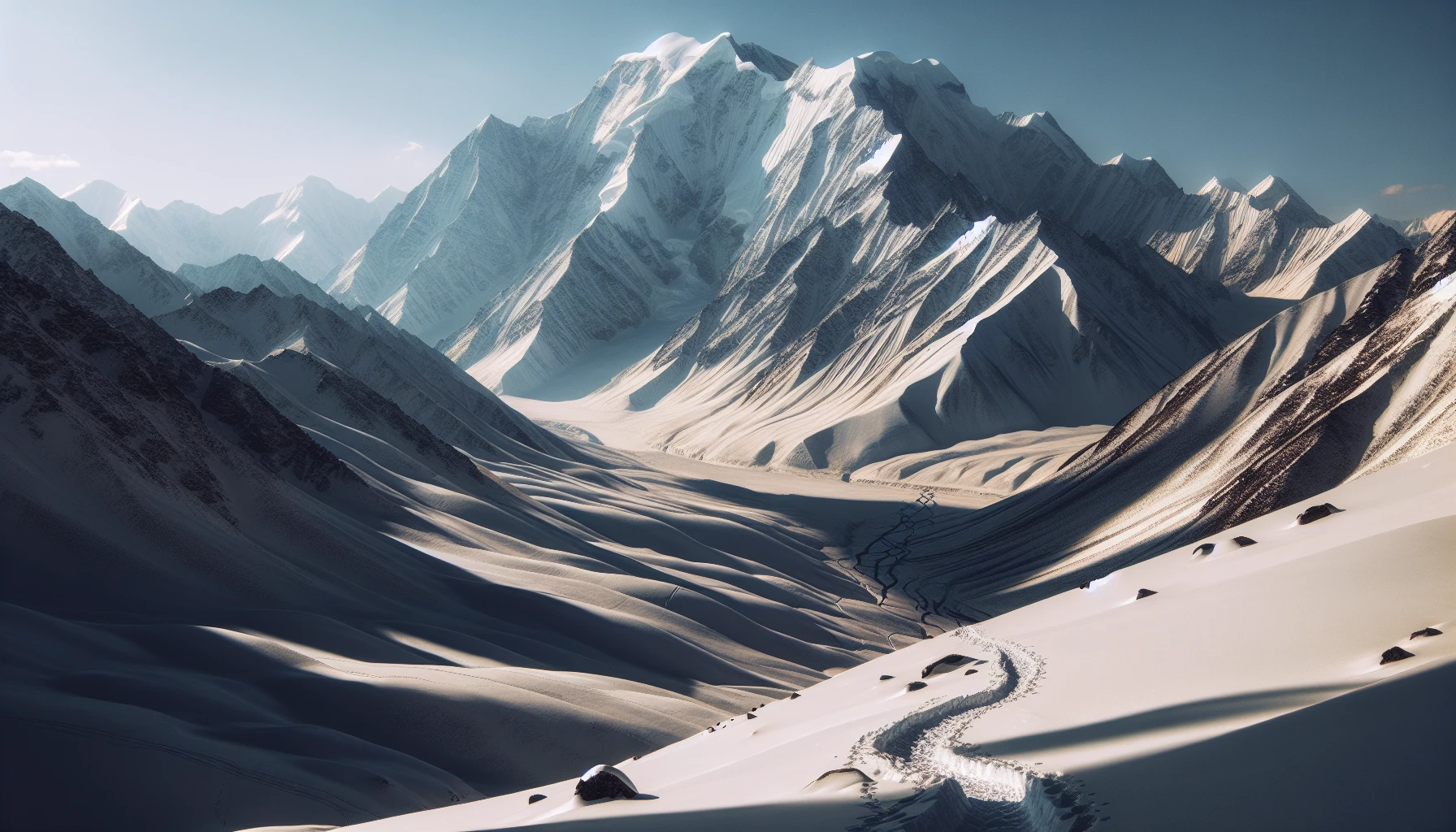
The Altai Mountains, home to the stunning Tavan Bogd massif, offer a truly remarkable hiking experience. The Tavan Bogd mountain range boasts Mongolia’s highest peak, Khuiten Uul, which stands at an impressive 4,369 meters above sea level. As you trek through the mountainous desert landscape, you’ll encounter a variety of species, such as:
- argali sheep
- ibex
- red deer
- snow cocks
- golden eagles
All of these species call the Altai Tavan Bogd National Park their home. The park is also known for its two glaciers, the Potanin and Alexander glaciers, which flow from the Tavan Bogd massif and create a mesmerizing sight for adventurers.
This adventure is about more than just reaching the summit; the journey is replete with inspiring views of rolling hills, diverse wildlife including snow leopards, and unique cultural encounters. Each step of the journey, from horse riding in the park to horse trekking across marshes and streams, presents new challenges and unforgettable moments.
So, we’ll walk you through the journey of ascending the Tavan Bogd massif while basking in the unique beauty of the Altai Mountains.
Preparing for the Trek to Tavan Bogd Base Camp
Before embarking on your trek to the Tavan Bogd Base Camp, adequate preparation for the journey ahead is necessary. The trek, which takes approximately three days, begins at the South entrance of the Altai Tavan Bogd National Park, located in the White River Valley. The terrain, characterized by:
- high mountain terrain
- gradual ascent
- marshes
- streams to cross
offers an exhilarating hiking experience. Be prepared for fun hiking adventures and, if you’re lucky, you might even spot a majestic golden eagle soaring above the breathtaking peaks.
As for equipment, packing all the necessities for the trek is vital. Here are some items you should include:
- A sturdy and waterproof backpack
- Water
- Snacks
- Camera gear
- Spare clothes
- Your trusty sleeping bag
Ensuring you have all the necessary gear, including sleeping bags, will not only make your trek more enjoyable but also safer and more comfortable.
The Ascent of Khuiten Peak
Climbing Khuiten Peak, the highest mountain in Mongolia, is an experience like no other. The ascent is challenging, yet not insurmountable, and offers some of the most picturesque views in the region. The typical route for ascending Khuiten Peak begins at the entrance of Altai Tavan Bogd National Park and is usually undertaken between June and August, taking up to 14 days to complete.
As you make your way to the summit, you’ll be greeted by an ever-changing landscape, with breathtaking views of snow-capped mountains, lush valleys, and vast glaciers. The ascent of the cold peak, Khuiten Peak, is not only a physical challenge but also an opportunity to immerse yourself in the rich history and culture of the local families who have lived in the region for generations.
So, tighten your boot laces, and get ready for a memorable adventure as you conquer Mongolia’s highest peak.
Alternative Peaks and Glacial Views in the Altai Mountains
If you’re looking to explore beyond Khuiten Peak, the Tavan Bogd region offers a wealth of alternative peaks and glacial views that are just as mesmerizing. Malchin Peak, the lowest peak of the Altai Tavan Bogd mountain range, provides an alternative hiking experience that can be ascended without the use of special equipment. This makes it an excellent option for those seeking a less challenging, yet equally rewarding, adventure.
Another awe-inspiring sight in the region is the Pontuninii Glacier, which covers an area of 23 square kilometers and is situated near the Tavan Bogd Mountains. The glacier’s vast expanse of ice and snow is a testament to the incredible natural beauty that the Altai Mountains have to offer. So, whether you’re conquering the highest peaks or marveling at the region’s glacial wonders, you’re sure to create memories that will last a lifetime.
Embracing the Altai Landscape
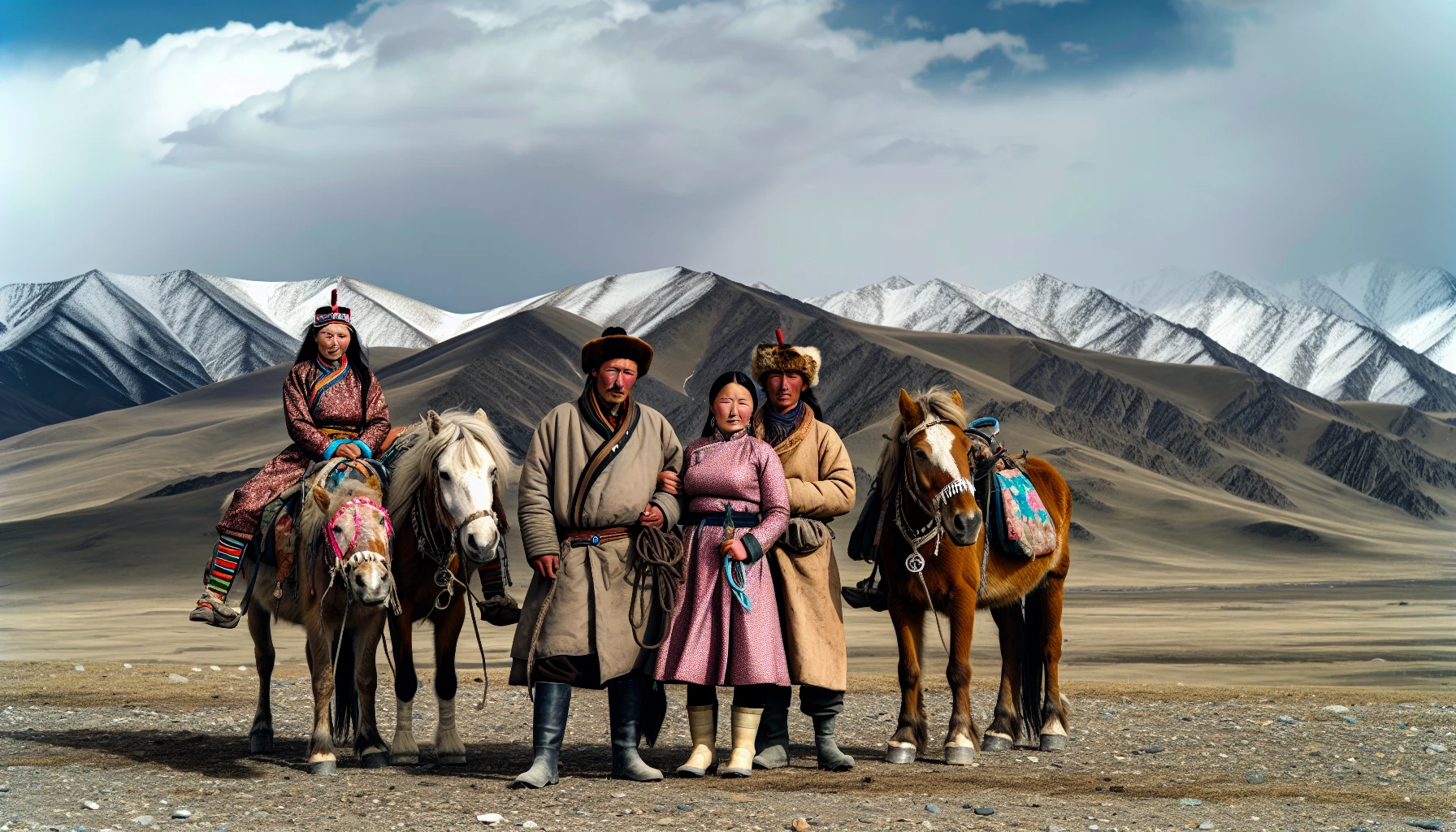
As you trek through the Western Mongolia, particularly the Mongolian Altai Mountains, you’ll quickly come to appreciate the region’s rich history and unique biodiversity. The Highlands of Mongol Altai have a history that extends back to the Paleolithic period and continues through the Bronze Age and various nomadic empires, such as the Scythians, Hunnus, Turks, Uigurs, and Mongols. This rich history is evident in the thousands of cultural features and artifacts found throughout the region, including:
- Petroglyphic complexes
- Burial mounds
- Deer stones
- Monumental structures
The Altai Mountains are also home to a diverse range of flora and fauna, many of which are endemic and endangered. The Altai Tavan Bogd National Park, in particular, is home to several endangered species, such as:
- argali sheep
- ibex
- grey wolves
- red deer
- golden eagles
As you embrace the captivating beauty of the Altai landscape, you’ll be left with a profound sense of connection to the natural world and the rich cultural heritage that this unique region has to offer.
Encounters with Nomadic Life
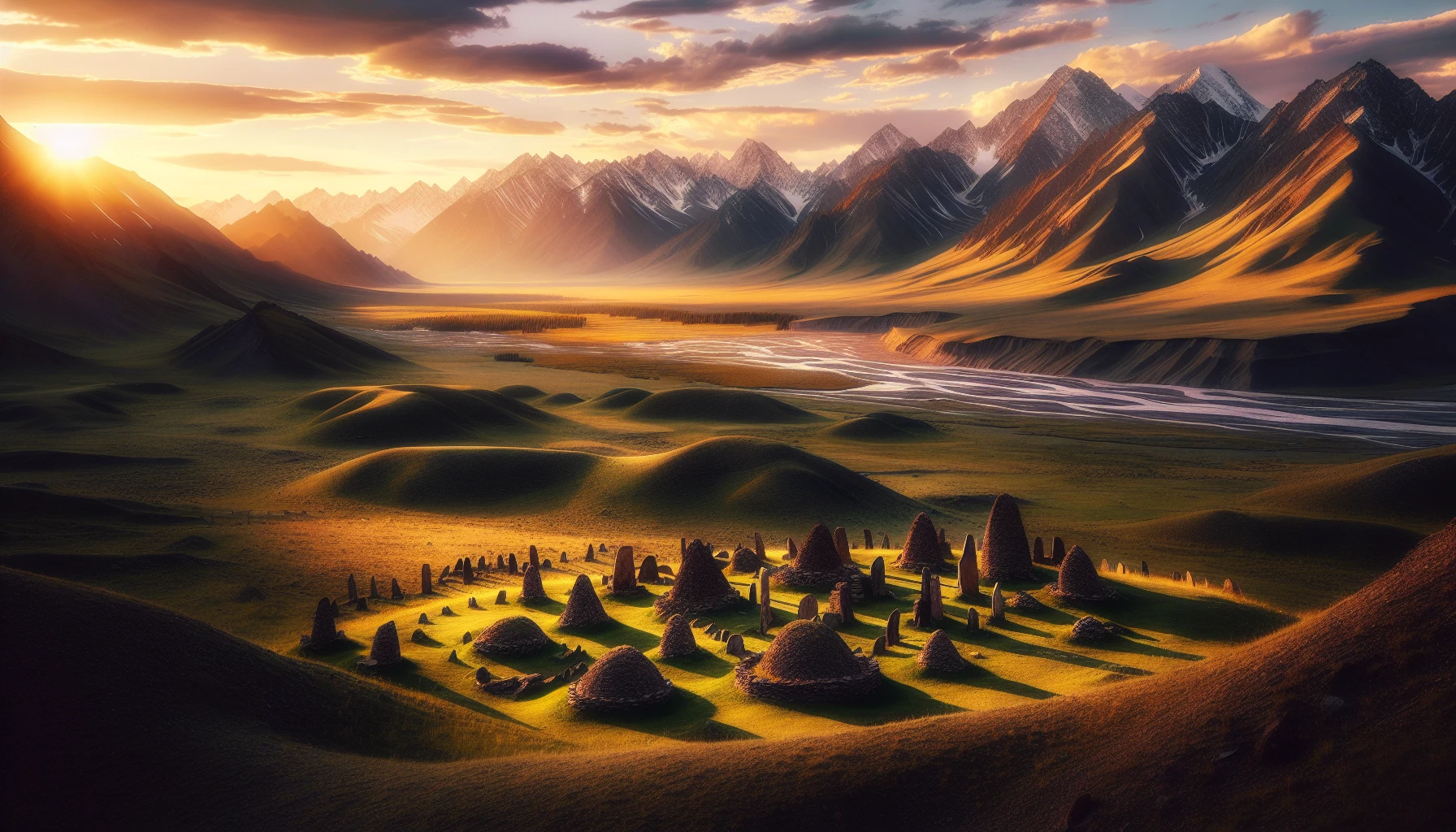
One of the most unforgettable aspects of our journey through the Altai Mountains was the opportunity to meet and interact with local nomadic families. These encounters provided a rare glimpse into a way of life that has remained largely unchanged for thousands of years. We had the privilege of visiting a Kazakh eagle hunter’s ger, where we met Baytie, an 80-year-old master eagle hunter who was training his son and grandchildren to carry on the ancient tradition. This once-in-a-lifetime experience offered a deeper understanding and appreciation for the unique nomadic culture of the Altai people.
Nomadic life in the Altai Mountains is characterized by a deep connection to the land and the animals that inhabit it. During our journey, we witnessed the herding of livestock, such as horses, camels, and yaks, which are integral to the daily lives of the local people. As you trek through this breathtaking landscape, you’ll be left with a newfound appreciation for the resilience and adaptability of the nomadic people who have called this region home for generations.
Historical Sites Along the Trail
The journey through the Altai Mountains is not only a feast for the eyes but also a journey through time, with numerous historical sites to uncover along the trail. The Petroglyph Complexes of the Mongolian Altai, for instance, offer a fascinating glimpse into the region’s ancient past, with petroglyphs, standing stones, burial mounds, and Kazakh cemeteries. The Turkic Stone Men, another historical site, are ancient stone statues dating back to the 6th and 9th centuries.
Another must-see historical site is the Tsagaan Sala, which boasts the largest concentration of petroglyphs in the park, with over 10,000 petroglyphs spread along a 15 km river valley. These petroglyphs primarily depict livestock and big game, as well as hunting scenes and scenes of human life in the region. Exploring these historical sites offers a unique opportunity to immerse yourself in the rich history and cultural heritage of the Altai Mountains, adding another layer of depth and meaning to your hiking adventure.
Logistics of the Adventure
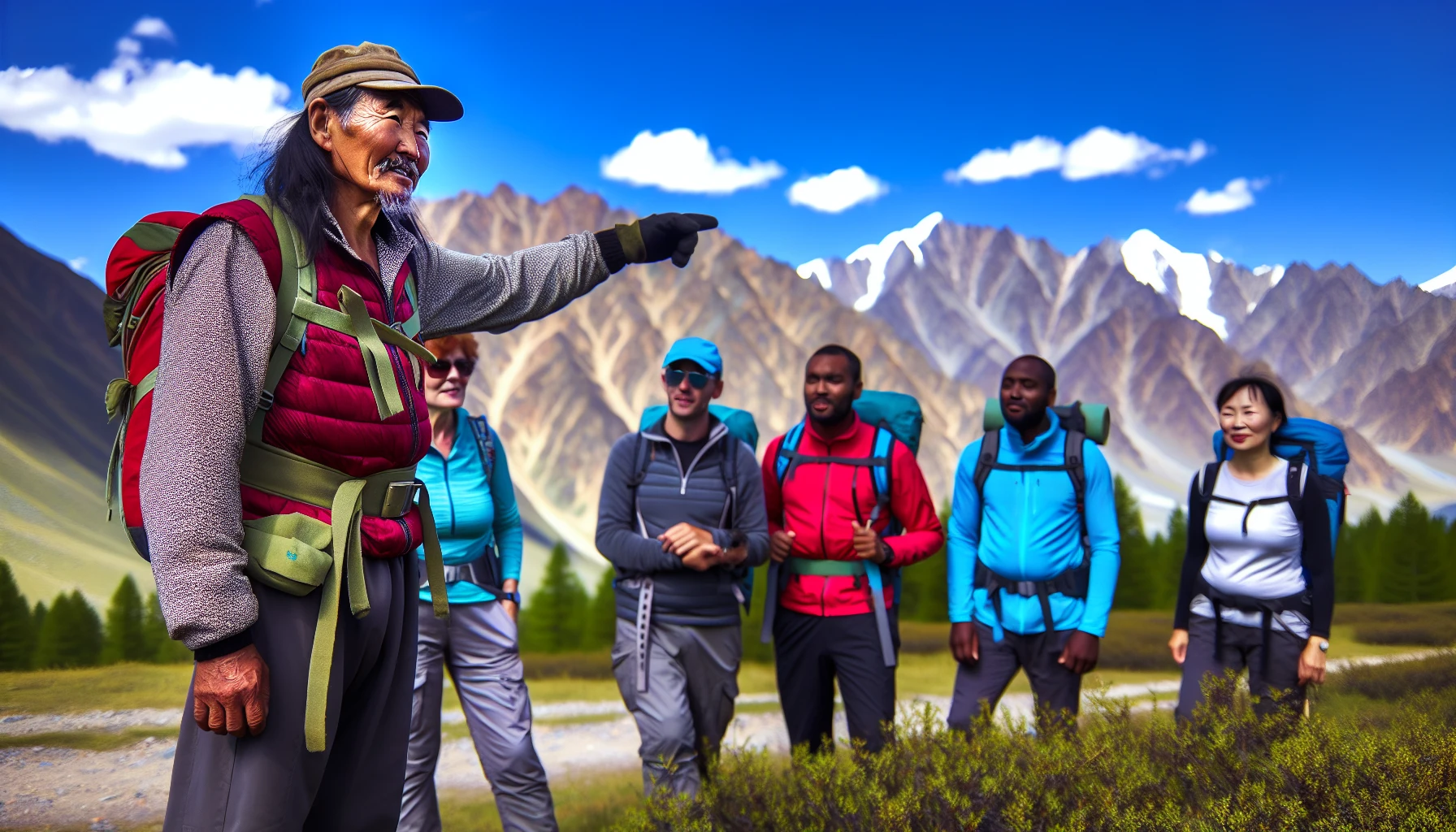
Before setting out on your hiking adventure in the Altai Mountains, planning and organizing your trip logistics is a key step. Here are some important things to consider:
- A border permit is required to be within 100 kilometers of the Russian and Chinese borders.
- A park permit is needed to enter into the Altai Tavan Bogd National Park.
- You’ll need to arrange transportation to Bayan-Olgii Province, the gateway to Tavan Bogd.
To ensure a successful and enjoyable trek, it’s important to choose a reliable tour company or local guide to help with the logistics of your trip. Companies like Blue Wolf Travel, Kazakh Eagle Hunters, and Altai Expeditions are renowned for their professionalism and dependability, offering services such as permits, transportation, and guide arrangements.
Thorough planning and organization of your adventure will ensure you’re adequately prepared to relish in the breathtaking beauty and unforgettable experiences that the Altai Mountains offer.
Getting to Bayan-Olgii Province
Traveling to Bayan-Olgii Province is an adventure in itself. The most optimal way to reach this remote region is to:
- Fly into Ulaanbaatar, Mongolia’s capital city.
- From Ulaanbaatar, take a short flight to Ulgii on airlines such as Aero Mongolia or Hunnu Air.
- The cost of a flight from Ulaanbaatar to Ulgii typically ranges from $138 to $327.
Alternatively, you can opt for a more scenic journey by taking a bus from Ulaanbaatar to Bayan-Olgii Province, which runs three times a week. Whichever mode of transportation you choose, be prepared for a thrilling journey through the diverse landscapes of Mongolia, eventually arriving at the stunning Altai Mountains.
Choosing Your Trekking Style
When planning your trek in the Altai Mountains, it’s important to consider the type of experience you’re looking for. If you prefer a guided trek with an experienced local guide, you can opt for a tour company that offers a complete package, including permits, transportation, and guide services. This option not only ensures a safe and well-organized trip but also allows you to fully immerse yourself in the local culture and natural beauty of the region.
On the other hand, if you prefer a more independent trekking experience, you can arrange for a tour company to purchase the necessary permits and transportation, and then hire a local with a camel or horse to accompany you on the trek. This option offers a more flexible and personalized adventure while still benefiting from the knowledge and expertise of a local guide.
Ultimately, the choice is yours – whether you opt for a guided or self-guided trek, the Altai Mountains promise an unforgettable experience.
Gear and Garb for the Great Altai
Having the right gear and clothing is necessary for a successful and comfortable trek in the Altai Mountains. From sturdy hiking boots and warm layers to a reliable backpack and sleeping bag, the right equipment will not only enhance your comfort but also ensure your safety on the trail. Additionally, it’s important to consider the specific requirements for your chosen trek, such as mountaineering boots, crampons, and ice axes for ascending Khuiten Peak.
As you plan your trek, keep in mind the varying weather conditions and terrain that you may encounter in the Altai Mountains. Dressing in layers and choosing moisture-wicking fabrics for your base layers is advised to help regulate your body temperature and stay dry. By packing the appropriate gear and clothing, you’ll be well-prepared to tackle the challenges and embrace the beauty of the Altai Mountains.
Essential Equipment Checklist
Before embarking on your trek, it’s important to confirm that you’re equipped with all the necessary items for a safe and enjoyable journey in the Altai Mountains. A comprehensive checklist should include:
- Appropriate hiking boots
- Warm and waterproof clothing
- A backpack
- A sleeping bag
- A tent
- A stove and cooking utensils
- A map and compass
- A first aid kit
- Adequate food and water
For those planning to ascend Khuiten Peak, additional gear requirements include:
- Mountaineering boots
- Crampons
- Ice axe
- Harness
- Helmet
- Ropes
- Carabiners
- Ascenders
- Descenders
- Prusik loops
- Specialized clothing for cold weather conditions
By carefully preparing and packing the essential equipment, you’ll be ready to tackle the challenges and experience the awe-inspiring beauty of the Altai Mountains.
What to Wear on the Mountain
Appropriate clothing is key to ensuring your comfort and safety while trekking in the Altai Mountains. For hiking in cold weather, consider wearing base layers made of synthetic fabric or merino wool, a large puffy down jacket, polypro long underwear, wool socks, and a wool sweater. In addition to staying warm, it’s crucial to protect yourself from the sun with sun-protective clothing, sunglasses, and sunscreen.
For treks during the summer months, lightweight and breathable attire, such as long-sleeve t-shirts and light fleece, is recommended for daytime wear. However, it’s essential to bring additional layers for varying weather conditions, as the climate in the Altai Mountains can be unpredictable. By dressing appropriately for the mountain, you’ll be well-equipped to enjoy the spectacular landscapes and unforgettable experiences that await you in the Altai Mountains.
Making the Most of Your Hike
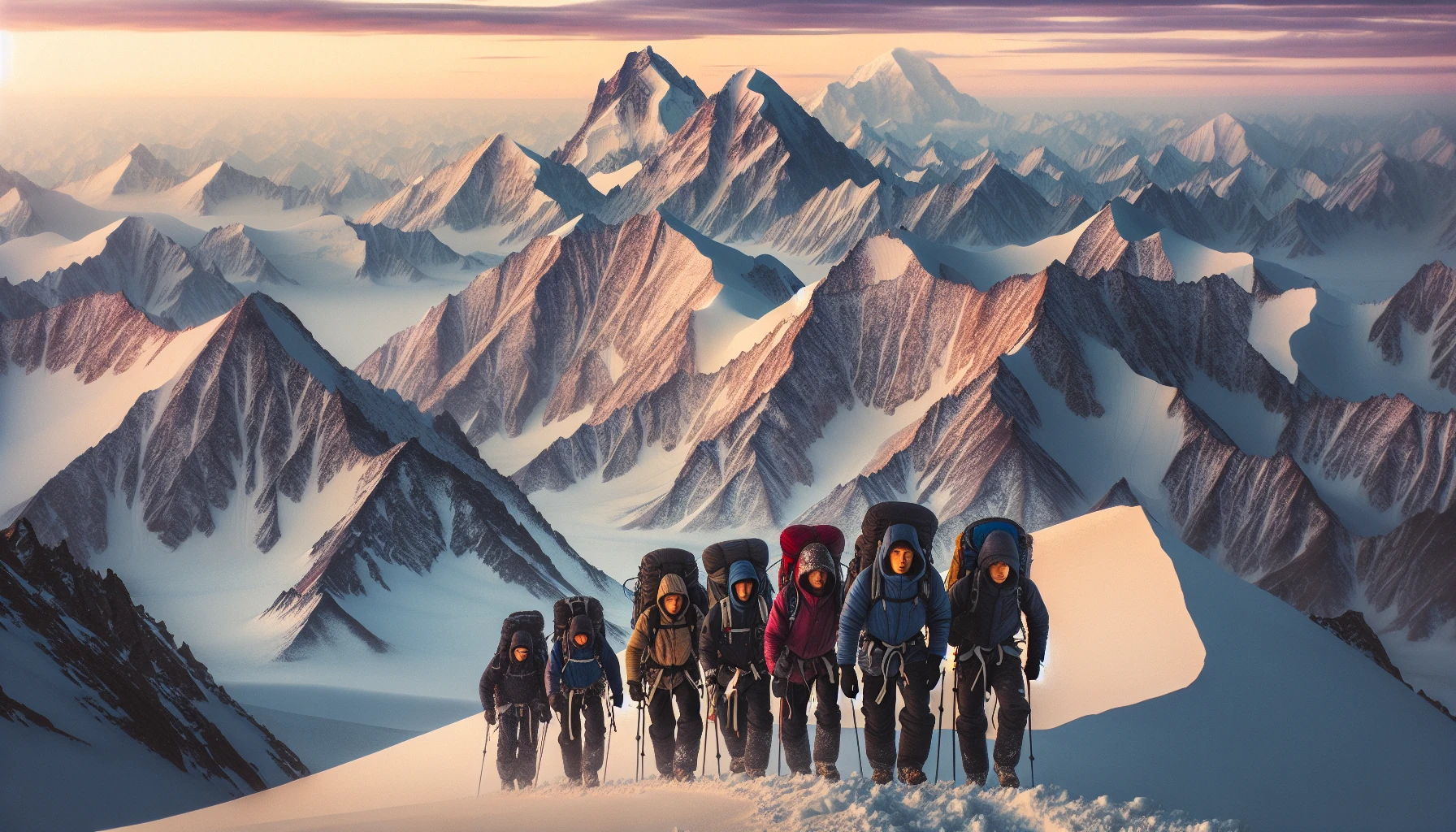
To best experience the wonders of the Altai Mountains, plan your trek during the most suitable time of year. Late summer is the most favorable time for mountain climbing in the region, as the climate is typically more stable and predictable. Additionally, be sure to take advantage of the unique attractions and experiences that the Altai Mountains have to offer, from horseback riding and exploring glaciers to visiting ancient rock carvings.
Throughout your journey, be prepared for unexpected surprises and delights, as the spectacular Altai Mountains never cease to amaze. Whether you’re marveling at the stunning landscapes or immersing yourself in the rich nomadic culture of the region, every moment spent in the Altai Mountains is an opportunity to create lasting memories and deepen your connection to the natural world.
Preserving the Altai Environment
While exploring the breathtaking beauty of the Altai Mountains, remember the significance of preserving this unique environment for future generations. The Altai region is home to a diverse range of flora and fauna, many of which are endemic and endangered. Environmental threats such as:
- deforestation
- habitat loss
- illegal hunting
- pollution from mining activities
pose significant challenges to the sustainability of the Altai ecosystem.
As responsible adventurers, it’s necessary for us to minimize our environmental impact and support conservation efforts in the region. This includes:
- Practicing leave-no-trace principles
- Respecting wildlife and their habitats
- Supporting local communities by engaging with local guides, tour operators, and eco-friendly accommodations
By taking these steps, we can help ensure that the unparalleled beauty and rich cultural heritage of the Altai Mountains are preserved for generations to come.
Summary
In conclusion, trekking in the Altai Mountains offers an unparalleled adventure filled with breathtaking landscapes, rich cultural encounters, and unforgettable experiences. As you ascend the majestic peaks, explore the diverse flora and fauna, and immerse yourself in the nomadic way of life, you will be left with a profound sense of awe and appreciation for the beauty and resilience of this unique region. So, lace up your boots and embark on a journey of a lifetime, as you conquer heights and embrace the captivating allure of Mongolia’s highest peak.
Frequently Asked Questions
Where is Mt Khuiten located?
Mount Khuiten lies on the Mongolian-Russian-Chinese border, in the heart of Mongolia's Altai Tavan Bogd. It is one of the least accessible mountains on earth, located 2000 kilometres west of Ulaanbaatar.
What mountain range is found western Mongolia?
The western part of Mongolia is dominated by the Altai Mountain range, with the Khangai Mountain Range in the northern regions. The Great Lakes Depression can be found in-between the two mountain ranges.
What is the toughest hike in the world?
The Great Himalaya Trail is widely accepted as the toughest single trail in the world. Spanning over 1,700 kilometres, it requires months to trek the entire path, making it too difficult for most people to attempt.
What are the major mountains in Mongolia?
Mongolia is home to three major mountain ranges - the Altai Mountains stretching from the northwest to the southeast, the Khangai Mountains spanning across central and north-central Mongolia, and the Khentii mountains in the east. The highest and longest range is the Mongol Altai Mountains, running for 600-650 kilometers from the northwestern tip of the country.
When is the best time to trek in the Altai Mountains?
The best time to trek in the Altai Mountains is during the late summer months for optimal climatic conditions.
 Altai glacier
Altai glacier